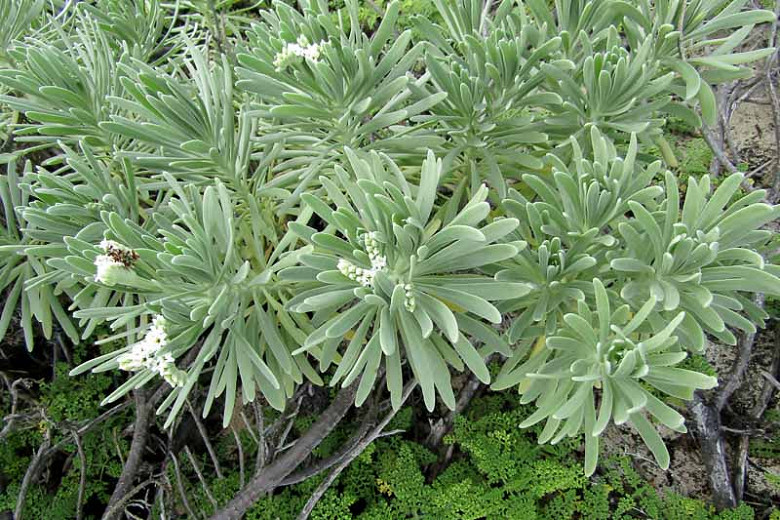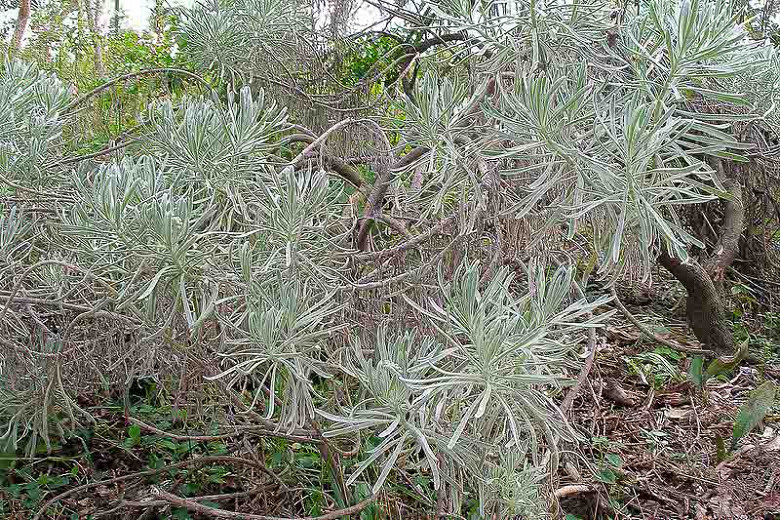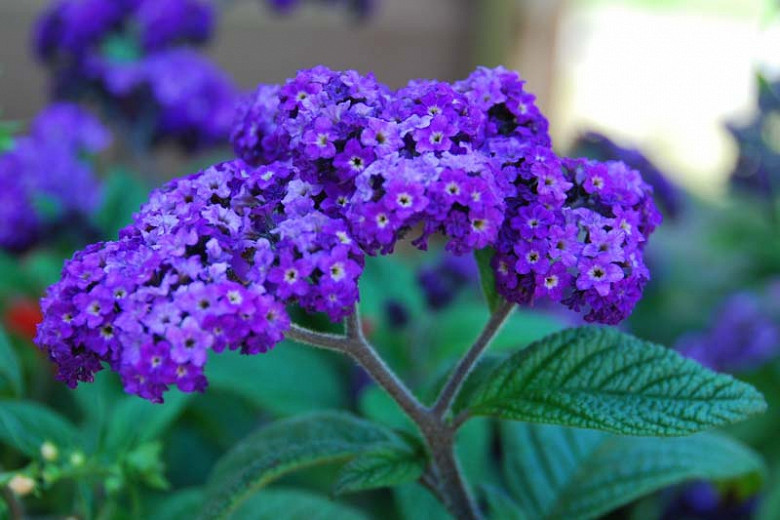Heliotropium gnaphalodes (Sea Lavender)
Heliotropium gnaphalodes (Sea Lavender) is an evergreen, mounding-to-sprawling shrub with slightly succulent, linear to spatulate leaves, 2-5 in. long (5-12 cm), densely arranged in tufts at the ends of the stems. Thick and stalkless, they are covered with soft, silky, light gray hairs, giving the plant a silvery look. Often, the dead leaves persist and hang on the stem. Blooming year-round, with a peak in fall and winter, small but showy flowers, white, pink, or lavender, with a greenish, yellowish or pinkish throat, are densely arranged in one-sided curled spikes. The blossoms have a mild, sweet fragrance, and they attract many pollinators, mostly butterflies. They give way to black or brown drupes enclosed in a corky head, which facilitates dispersal on ocean currents. Flowers and fruit are often present simultaneously. Found in dunes and thickets on the Atlantic coast of Central and South Florida, Sea lavender is excellent in coastal landscapes as a specimen plant, in a container, or planted in mass as a hedge or screen. Once established, it may form colonies as its low-growing branches take root when covered by sand. This makes Sea Lavender suitable for dune restoration projects as it helps stabilize dunes, and prevents or slows down erosion. A beautiful shrub for oceanfront gardens, it is susceptible to diseases inland. Sea Lavender is listed as endangered by the state of Florida.
- Grows up to 3-6 ft. tall (90-180 cm) and 3-10 ft. wide (90-300 cm).
- Performs best in full sun in dry to slightly moist, sandy or calcareous, well-drained soils. Highly drought tolerant once established, it withstands exposure to salt and hurricane winds. This plant has low nutritional needs
- Perfect addition to coastal gardens as the plant is highly tolerant of saline beach soils and salt spray. In the landscape, Sea Lavender can be used as a specimen shrub, a foundation plant, a groundcover, or as an informal hedge.
- No serious pest or disease issues. Keep an eye out for root rot in irrigated landscapes. Overwatering and soils with high organic matter are the main reasons for failure in inland landscapes.
- Can be grown from seeds, cuttings, and ground layers. Propagation using stem cuttings is easier and faster.
- Toxic to horses.
- Native plant found naturally along the Atlantic coast of central and south Florida.
Requirements
| Hardiness | 9 – 12 |
|---|---|
| Plant Type | Shrubs |
| Plant Family | Heliotropium – Heliotrope |
| Exposure | Full Sun |
| Season of Interest | Spring (Early,Mid,Late)Summer (Early,Mid,Late)FallWinter |
| Height | 3' – 6' (90cm – 180cm) |
| Spread | 3' – 10' (90cm – 3m) |
| Spacing | 48″ – 72″ (120cm – 180cm) |
| Water Needs | Low |
| Maintenance | Low |
| Soil Type | Sand |
| Soil pH | Acid, Alkaline, Neutral |
| Soil Drainage | Well-Drained |
| Characteristics | Fragrant, Showy, Evergreen |
| Native Plants | United States, Southeast, Florida |
| Tolerance | Drought, Dry Soil, Salt |
| Attracts | Butterflies |
| Garden Uses | Beds and Borders, Ground Covers, Hedges and Screens, Patio and Containers |
| Garden Styles | Coastal Garden |





